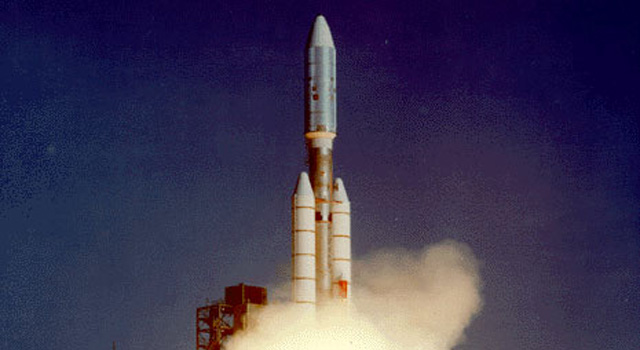
NASA Engineers Reactivate Voyager 1 Thrusters, Opening New Avenues for Scientific Inquiry and Legacy Data
In an extraordinary demonstration of engineering skill and determination, NASA has successfully revitalized a previously inactive set of thrusters on the legendary Voyager 1 spacecraft, over 45 years following its launch in 1977. Once thought to be nonfunctional since 2004, these thrusters have been reactivated just in time to avert a crucial communications blackout and guarantee that the spacecraft—now positioned over 15 billion miles away in interstellar space—can keep sending data back to Earth. This accomplishment not only highlights NASA’s technical ingenuity, but also forms part of a larger story regarding the lasting significance of data from legacy space missions.
Engineering Ingenuity Preserves Historic Spacecraft
Voyager 1, among humanity’s most far-reaching spacecraft, relies on its thrusters to sustain its orientation so that its communications antenna stays directed toward Earth. In March 2024, with the thrusters inactive for nearly twenty years, NASA engineers identified that a shift in the circuits controlling the heater power supply might be the underlying issue. They speculated that a digital “switch” had possibly been set to an improper position, hindering the heater activation crucial for the safe operation of the thrusters.
“We genuinely believed these thrusters were gone for good,” noted Todd Barber, the propulsion lead for Voyager at NASA’s Jet Propulsion Laboratory (JPL). “Reactivating them required a mix of traditional knowledge, analytical insight, and a lot of guts. It turned out to be yet another miraculous rescue for Voyager.”
The mission was a race against the clock. The thruster heaters needed to be activated before May 4, 2024, when the sole communication link to the spacecraft—Deep Space Station 43 (DSS-43) in Canberra, Australia—would undergo extended downtime for upgrades. If the heaters did not restart before a scheduled automatic firing of the thrusters, the ensuing cold ignition could have inflicted internal damage, potentially jeopardizing the mission.
Fortunately, the strategy succeeded. On March 20, engineers sent the commands. With a communications delay of nearly 47 hours due to Voyager 1’s distance, the team nervously tracked incoming data. Within 20 minutes, the temperature of the thruster heaters surged unexpectedly—confirming that the command had been successfully carried out and that the heaters were once more operational.
Ensuring Continuous Communication
Time was of the essence as spacecraft commands must be communicated through the Deep Space Network’s most powerful antennas. DSS-43, currently the only antenna that can reach Voyager due to the immense distance, will undergo extensive enhancements from May 2024 to early 2026. Though brief operational opportunities will still be available, the downtime presents a notable challenge.
Nevertheless, NASA officials assert the necessity of the impending disruption. “These upgrades are crucial for supporting forthcoming missions, including future crewed landings on the Moon,” explained Suzanne Dodd, Voyager’s project manager and the director of NASA’s Interplanetary Network. “They will also improve our capacity to gather and convey data from deep space missions, some of which continue the discoveries initiated by Voyager decades ago.”
Voyager’s ongoing expedition—and its capacity to communicate—represents not just engineering steadfastness, but a mission that is far from complete.
Legacy Data, New Insights
As engineers strive to keep Voyager 1 operational, the abundant data collected from it and other missions continues to yield scientific dividends. NASA’s scientific data archives now encompass more than 100 petabytes—equivalent to around 20 billion smartphone photos. This expanding data reservoir plays a significant role in current scientific inquiry, with over half of published research relying on archived mission data.
Advanced analytics, artificial intelligence (AI), and machine learning tools are revitalizing old datasets. For instance:
– In 2024, scientists revisiting Voyager 2’s 38-year-old measurements discovered a significant solar wind event that compressed Uranus’s magnetosphere shortly before Voyager’s close flyby—a rare planetary interaction observed in only 4% of similar data records.
– Information from NASA’s Lunar Reconnaissance Orbiter contributed to confirming the existence of water ice at the Moon’s south pole, bolstered by newly reanalyzed data from 2024.
– In an unexpected confluence with archaeology, researchers utilized LiDAR data from a 2013 NASA airborne imaging mission to discover a previously unknown ancient Mayan city concealed within the jungles of Mexico.
Fostering the Future with AI and Open Access
To harness this vast trove of scientific information, NASA is crafting open-source AI models intended to extract correlations and unveil discoveries from decades of data. The Prithvi Geospatial and Weather foundation models for Earth sciences have already been launched; similar models are under development for heliophysics and lunar exploration.
“NASA’s scientific data represents one of our most treasured legacies,” stated Kevin Murphy, chief science data officer at NASA. “It narrates the story of prior missions while setting the stage for future exploration. By combining domain expertise…”